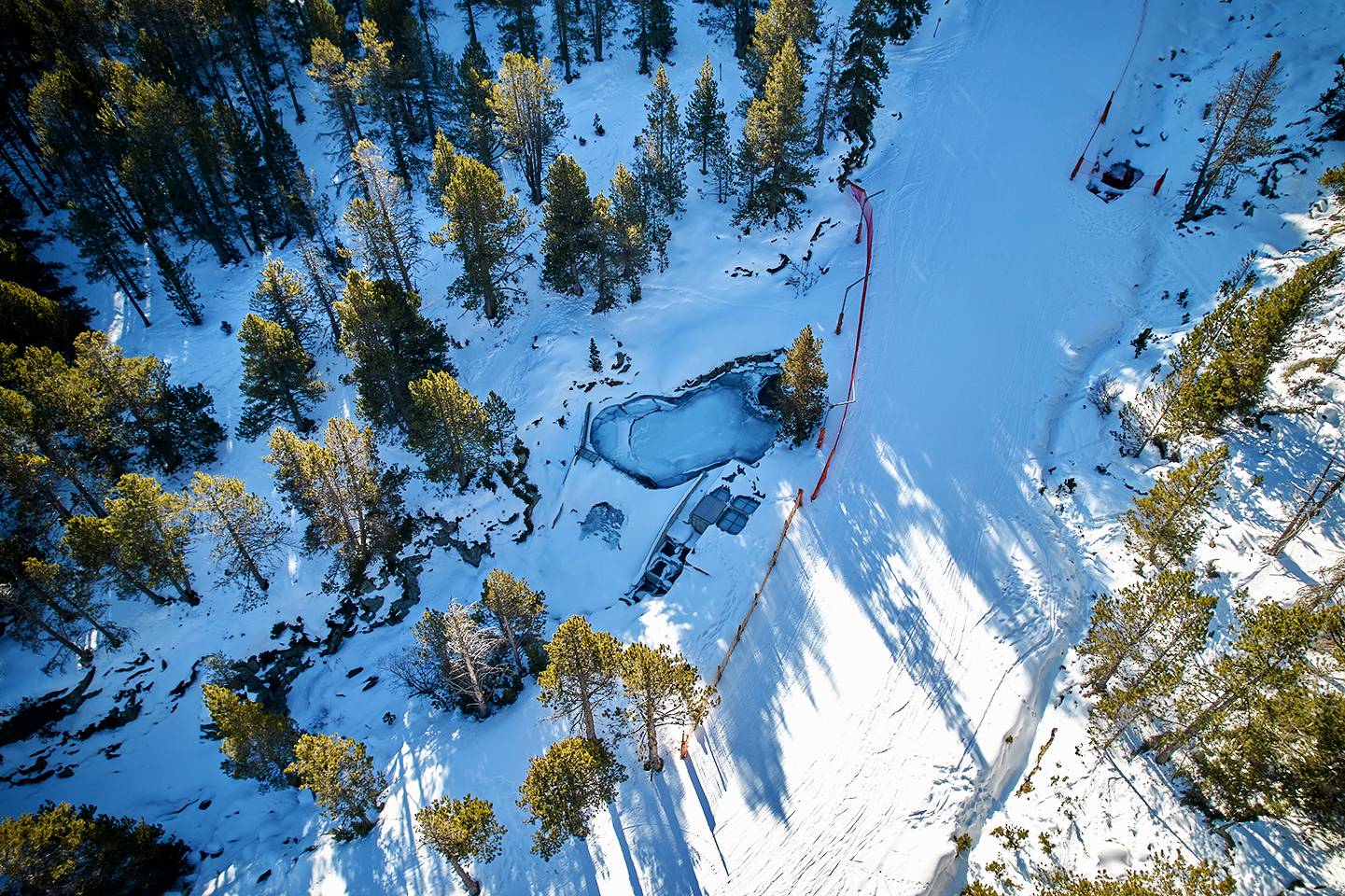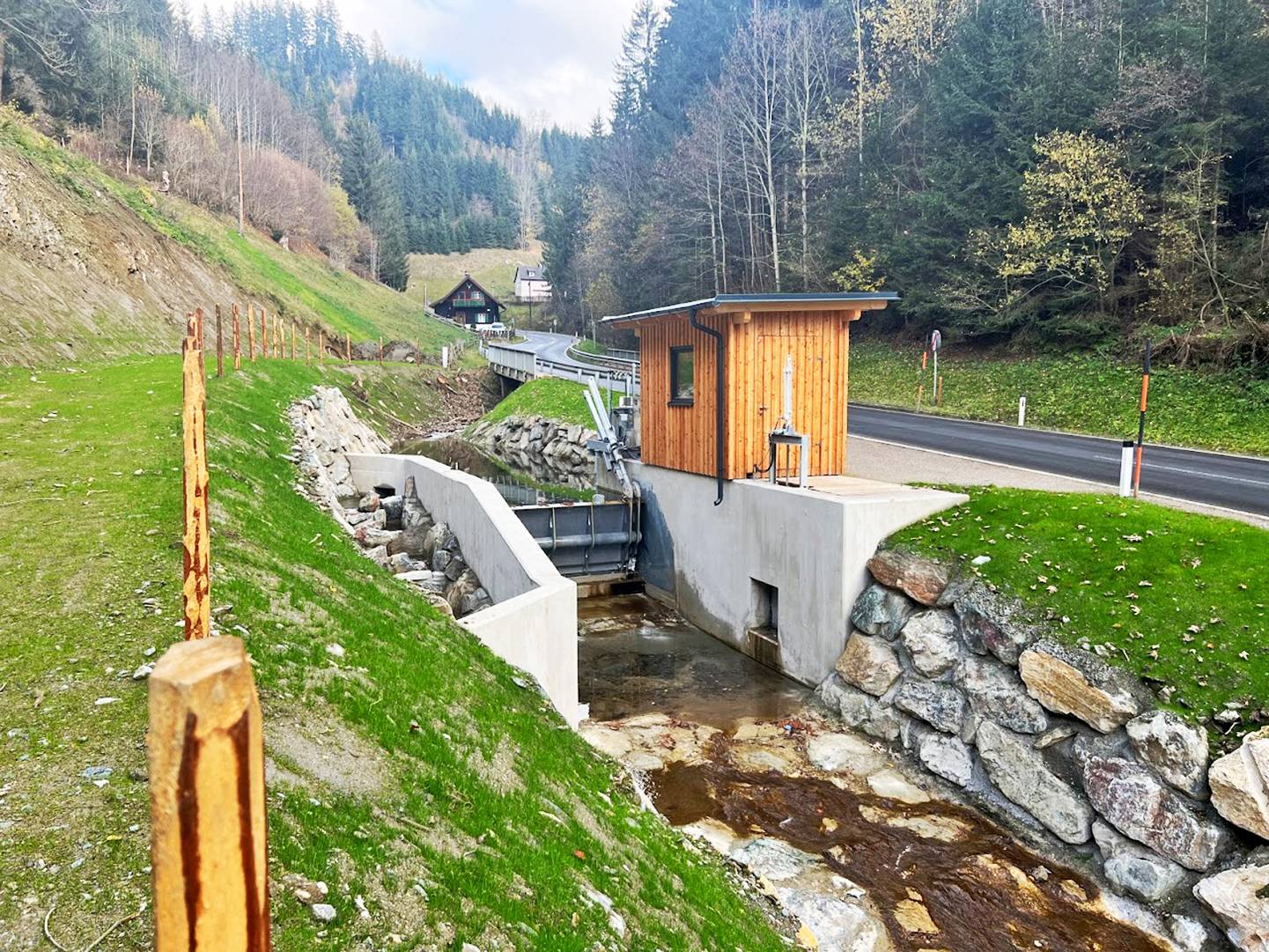Upper Austrian company extends leading role in Indonesian small-scale hydropower sector6 min read
Lesedauer: 5 MinutenIn 2017, GUGLER Water Turbines GmbH, which hails from Upper Austria, demonstrated its leading position in the Indonesian small-scale hydropower sector by taking on a range of projects.
Shortly before the turn of the year, an additional reference facility in South-East Asia commenced operations, namely the Tanjung Tirta hydropower plant operated by the company PT Maji Biru Pusaka. GUGLER supplied all of the electromechanical, instrumentation and control equipment for this new construction in the central area of the island of Java with an estimated average annual production of around 63 GWh. Two highly efficient Francis spiral turbines with a bottleneck output of 5 MW each are employed as central power generators; the design of the turbines ensures high levels of efficiency even with varying inflow conditions. All of the power produced is fed into the public grid, which represents yet another vital part for improving the local power supply.
Measured in terms of population size, the 255 million people living in the South-East Asian island nation of Indonesia make it the fourth-largest country in the world. Roughly half of the population is spread across the main island of Java, with the Jakarta metropolitan area alone accounting for around 10 million inhabitants. Although around a quarter of the population lives below the poverty line, economic growth has recently been experiencing an increase by between five and six per cent every year, making the Indonesian economy one of the world’s fastest growing. This is also reflected in the considerable investments in infrastructure projects that have been made by the state and private sector in the last few years. In order to improve the power supply across the country, it is essential to exploit untapped hydropower potential. This trend is also reflected in the order books of GUGLER Water Turbines GmbH – an all-round hydropower provider from Upper Austria. At the end of 2017, the industry experts at GUGLER, who are highly active on the international stage, demonstrated their leading position in the Indonesian small-scale hydropower sector by taking on a total of eight small-scale hydropower projects.
Indonesia as a vital market
One recently completed project is the Tanjung Tirta power plant located in the centre of Java in the province of Java Tengah, says GUGLER Project Manager Stefan Haderer. At the start of 2017, the operating company PT Maji Biru Pusaka awarded GUGLER the contract to supply all of the electromechanical equipment. This subsidiary belongs to PT Tamaris Hydro, a large private Indonesian utility company, specialised in generating electricity from hydropower. In addition, Tamaris Hydro commissioned the turbine manufacturers with another project at the northern tip of the country in the same year. Following its acquisition by Tamaris Hydro, plans were made to expand the Krueng Isep power plant, which was equipped with a complete package of equipment from GUGLER when it was newly constructed in 2015, to include a third turbine. “The two Pelton turbines at the plant together with the new Pelton turbine will now generate a bottleneck output of more than 25 MW. By contrast, the Tanjung Tirta power plant was to be equipped with two horizontal Francis spiral turbines for electricity production during its original construction,” explains Project Manager Haderer.
INITIAL COMMISSIONING IN AUTUMN 2018
In terms of its basic design, the Tanjung Tirta plant is a classic diversion power plant. In the Tanjung Tirta region, a local body of water is captured via a side weir and the works water is diverted in an open weir channel that is around 4 km long. At the end of the discharge channel there is a sand trap laid out in several trapezoidal stages, in which fine sediments are collected and washed back into the river through a purging device. Downstream from the open discharge channel is the inlet basin equipped with a fine trash rack, and immediately after this the DN2000 penstock begins. The penstock, which is around 400 m long and also runs above ground, is made from welded steel pipes routed to run in as straight a line as possible. Shortly before the transfer to the powerhouse, the penstock is split into two DN1300 pipes by a Y-branch pipe. The powerhouse was designed with an appropriate concrete-steel structure, and an indoor crane installed in advance proved very useful for installing the components weighing several tonnes. “In April 2018, the turbines along with the electrical equipment set off from the Port of Trieste on their approximately six-week journey to Indonesia. The generators supplied by Siemens Gamesa and the transformers provided by ABB were also shipped. The assembly work, which began in June with the installation of the turbine spirals, was performed by the supervisors from GUGLER, the partner companies and local workers. Once the electrical installation work was completed, the power plant was put into operation for the first time in October,” states Haderer.
5 MW BOTTLENECK OUTPUT PER TURBINE
For electricity production, the turbines designed with a horizontal shaft have a net head of 92.3 m and an extraction water quantity of 6 m³/s. The rotors of the turbines were milled from individual stainless steel monoblocs, and the special ZINGA coating was applied for corrosion protection instead of hot-dip galvanising in the steelwork for the spiral casing and draft tube. The hydraulic design of the Francis turbines, each with an absorption capacity of 6 m³/s and has proven itself to be efficient in numerous application across the globe, enables optimum levels of power generation at both full load and partial load. The guide vanes are adjusted by hydraulic actuators, with the corresponding hydraulic piping made entirely from stainless steel. With the full volume of water available, the units rotating at 750 rpm each deliver a bottleneck output of 5 MW, which is transferred via the turbine shaft to the directly coupled synchronous generators. The air-cooled generators were configured with an exhaust air duct at the bottom and are each designed for a rated apparent power of 6 MVA. Separate water-cooled lubrication units for the sleeve bearings of the generators ensure optimum operating temperatures. From the generator terminals, the power generated is conducted to the two externally stationed transformers and then to the medium-voltage switchgear. The electricity makes its way to the feed-in point to the public grid via a ground cable.
INDONESIA REMAINS A VITAL MARKET
The level-controlled electricity production at the power plant works fully automatically, reflecting the state of the art. GUGLER commissioned the Croatian automation specialist Sintaksa as a partner for executing the electrical engineering and control technology, with which the Upper Austrian company has already implemented a whole host of projects around the world. The power plant control system, which is visualised in a user-friendly manner, provides authorised users detailed information on the plant status and enables comprehensive adjustments to the various power plant components. The power plant can be monitored around the clock and maintained remotely via a secure online connection. The new Tanjung Tirta power plant finally commenced normal operation just before the end of last year. On average, the operators expect to achieve annual production of around 63 GWh, all of which will be fed into the public power grid. With the completion of this project, GUGLER can add another showpiece plant to its reference list for South-East Asia. However, resting on their laurels is out of the question for the turbine manufacturers, because further projects in Indonesia are already well advanced or under development.
Share:


